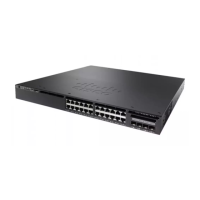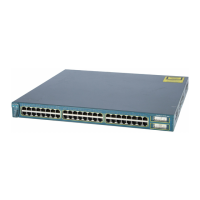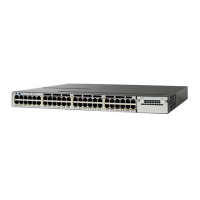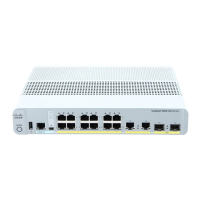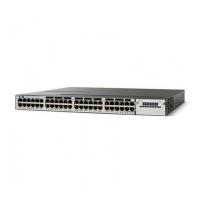Example Enabling ECMP Multicast Load Splitting Based on Source Group and Next-Hop Address, on
page 332
Effect of ECMP Multicast Load Splitting on PIM Neighbor Query and Hello Messages for RPF
Path Selection
If load splitting of IP multicast traffic over ECMP is not enabled and there are multiple equal-cost paths
towards an RP or a source, IPv4 multicast will first elect the highest IP address PIM neighbor. A PIM neighbor
is a device from which PIM hello (or PIMv1 query) messages are received. For example, consider a device
that has two equal-cost paths learned by an IGP or configured through two static routes. The next hops of
these two paths are 10.1.1.1 and 10.1.2.1. If both of these next-hop devices send PIM hello messages, then
10.1.2.1 would be selected as the highest IP address PIM neighbor. If only 10.1.1.1 sends PIM hello messages,
then 10.1.1.1 would be selected. If neither of these devices sends PIM hello messages, then 10.1.2.1 would
be selected. This deference to PIM hello messages allows the construction of certain types of dynamic failover
scenarios with only static multicast routes (mroutes); it is otherwise not very useful.
For more information about configuring static mroutes, see the Configuring Multiple Static Mroutes in
Cisco IOS configuration note on the Cisco IOS IP multicast FTP site, which is available at:
ftp://ftpeng.cisco.com/ipmulticast /config-notes/static-mroutes.txt.
Note
When load splitting of IP multicast traffic over ECMP is enabled, the presence of PIM hello message from
neighbors is not considered; that is, the chosen RPF neighbor does not depend on whether or not PIM hello
messages are received from that neighbor--it only depends on the presence or absence of an equal-cost route
entry.
Effect of ECMP Multicast Loading Splitting on Assert Processing in PIM-DM and DF Election
in Bidir-PIM
The ip multicast multipath command only changes the RPF selection on the downstream device; it does not
have an effect on designated forwarder (DF) election in bidir-PIM or the assert processing on upstream devices
in PIM-DM.
The figure illustrates a sample topology that is used in this section to explain the effect of ECMP multicast
load splitting on assert processing in PIM-DM and DF election in bidir-PIM.
IP Multicast Routing Configuration Guide, Cisco IOS XE Release 3SE (Catalyst 3650 Switches)
320 OL-29890-01
IP Multicast Optimization: IP Multicast Load Splitting across Equal-Cost Paths
Overview of ECMP Multicast Load Splitting
